解构剥苔舌,郁结阴亏,脾不升清为其主病机,后附常用药对生苔丹。
一、剥苔舌的重新定义:从“土壤干涸”到“水渠堵车”的中医新解
1. 传统理论的突破
我们先看一下第九版教材《中医诊断学》上关于剥苔的论述:
舌面本有舌苔,疾病过程中舌苔全部或者部分脱落,脱落处光滑无苔。
根据舌苔剥落的部位和范围大小不同,可分为以下几种:
舌前半部分苔剥落者称为前剥苔。
舌中部分苔剥脱者,称中剥苔。
舌根部分苔剥落者,称根剥苔。
舌苔多处剥落,舌面仅斑驳残存少量舌苔者,称花剥苔。
舌苔不规则的剥脱,边缘凸起,界限清楚,形似地图,部位时有转移者,称为地图舌。
舌苔全部剥脱,舌面光洁如镜者,称为镜面舌,又称光滑舌。
舌苔剥落处舌面不光滑,仍有新生苔质颗粒可见者,称为类剥苔。
临床意义:主胃气不足,胃阴损伤,或气血两虚。
不知道为什么,我一看课本,就感觉很难过。
就像一片庄稼地干旱不长庄稼了,上来就说水池没水了。我们老百姓都知道看一看是不是水渠堵住了,水过不来。或者看看压力泵是不是压力小了,水抽不上来。
关于舌苔的问题,我们可以看一看之前写的这篇文章:舌苔生成的原理。技法篇 | 舌诊之解构舌苔产生的原理
如果按照这个解析,我会说五脏六腑都跟舌苔产生有关系,剥苔也是。脾气的运转,肾阳的温煦,肝气的推动,肺气的宣肃。
那么这么一记,脑子里感觉清楚,实际一用又是一团乱麻,不清不楚,稀里糊涂。那我们直接换个极简思路来看问题。其实就像针灸一样,你从经络角度治病可以,从取象思维治病一样有效,我用五输穴五行生克还有效。比如你在楼上洗澡,正洗着突然花洒没水了。那么我们可以从三个方面考虑。
第一那个蓄水桶没水了。第二水管不知道哪里可能被毛发或者什么布条等杂物堵住了。第三那个往上输水的压力泵水压太小了,水推不上去。
从这个角度对应我们的剥苔生产原理,我总结为:郁结,阴亏,脾不升清。
郁结:可以是气血痰寒热,即气滞,血瘀,痰湿水饮,寒邪,热邪等。
阴亏:这个不要老想着生地、玄参、麦冬养阴。这个什么阴都是脾胃气血化生的,健脾胃是根本。
脾不升清:一个是脾气弱,脾气升清功能不行了,不往上走。一个是肝气不升,这个车轮不转了,车轴也就不转,肝升则脾升。再有就是肾阳的温升推动,阳气也起着推动上升的作用。
这样总结下来,郁结阴亏,脾不升清(三升),简单容易记,照顾较周全,用的时候很舒服。
- 教科书定义:剥苔=胃气不足/胃阴损伤,但临床发现:
- 剥苔患者舌质多淡嫩(阳气不足)而非胖大(痰湿壅盛)
- 舌苔剥落处可见新生颗粒(阳气欲升之象)
- 现代验证:舌菌群检测显示剥苔区域菌群多样性降低(《Nature Microbiology》2023年数据)。
2. 剥苔生成三要素模型
① 郁结(气血痰寒热) → 水渠堵车
② 阴亏(脾胃化源不足) → 土壤贫瘠
③ 脾不升清(肝肾阳气推动无力) → 水泵故障 二、12张舌象图谱解析与调理方案
1. 典型剥苔舌分类
下面我们再来看舌象分析:
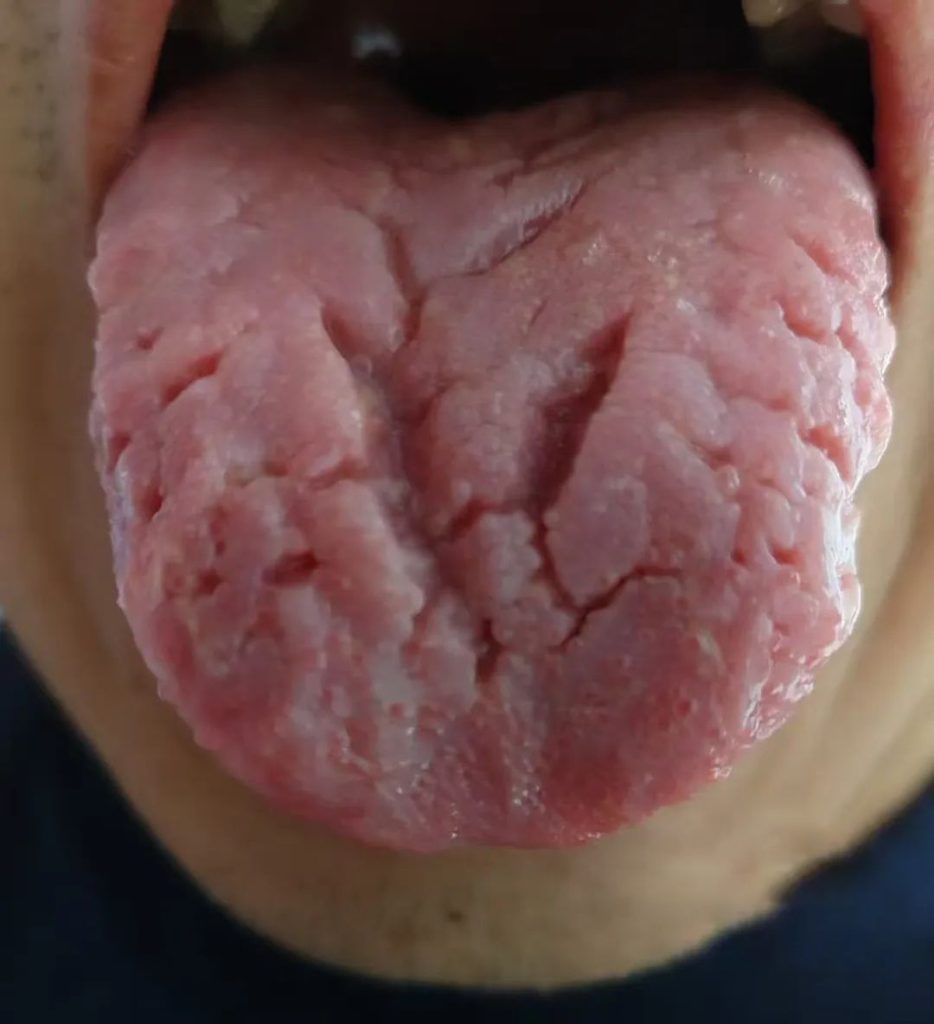
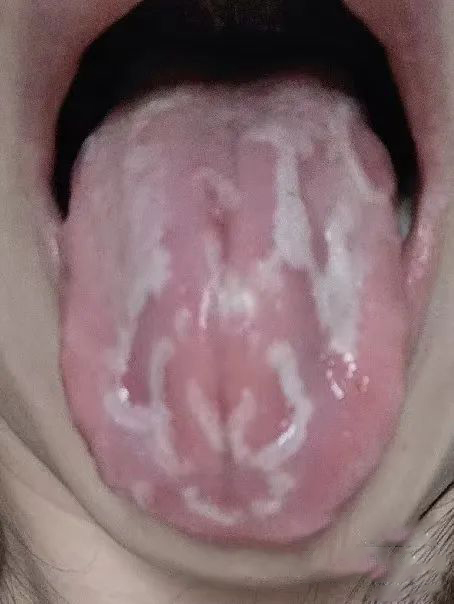
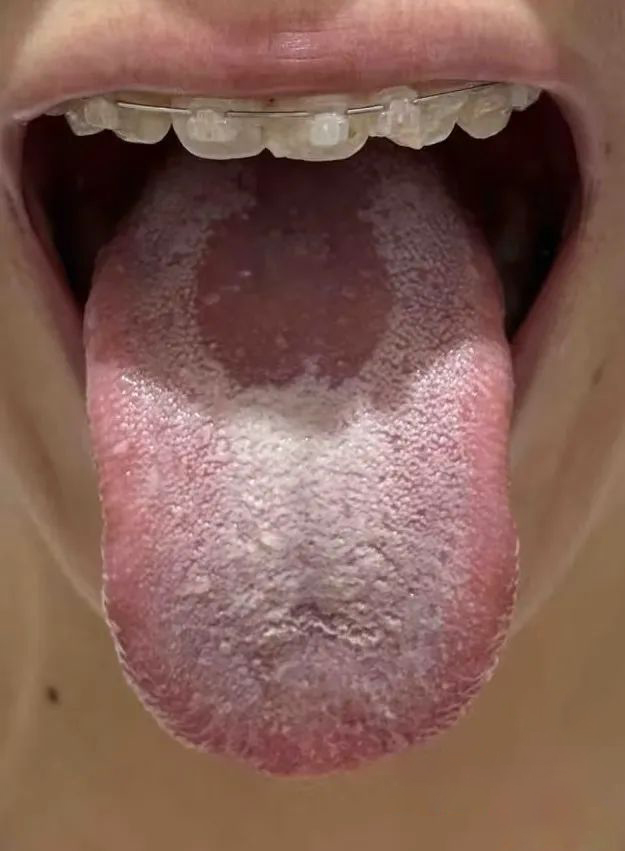
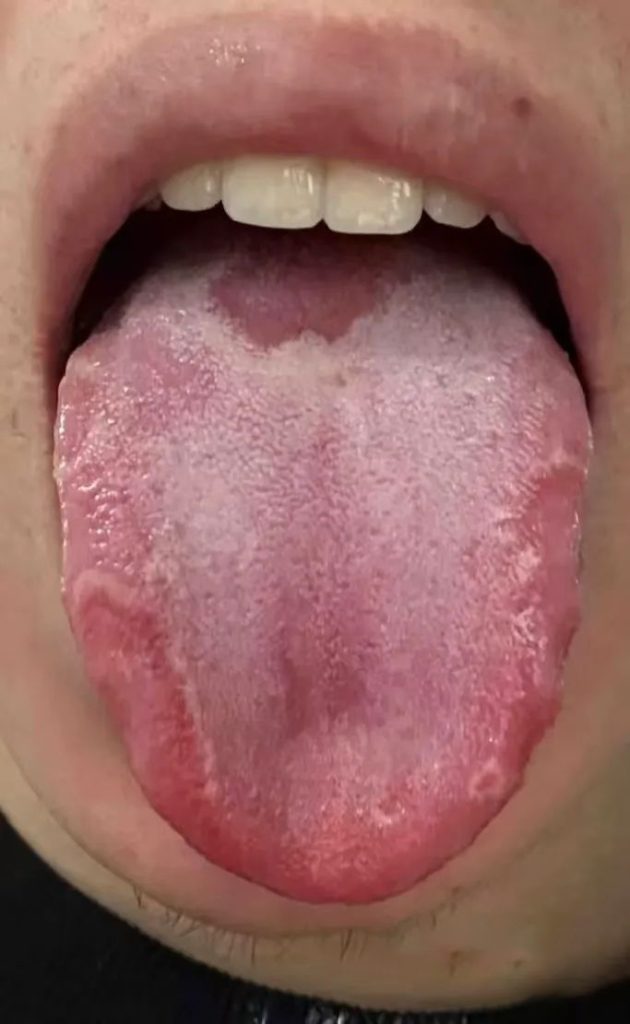
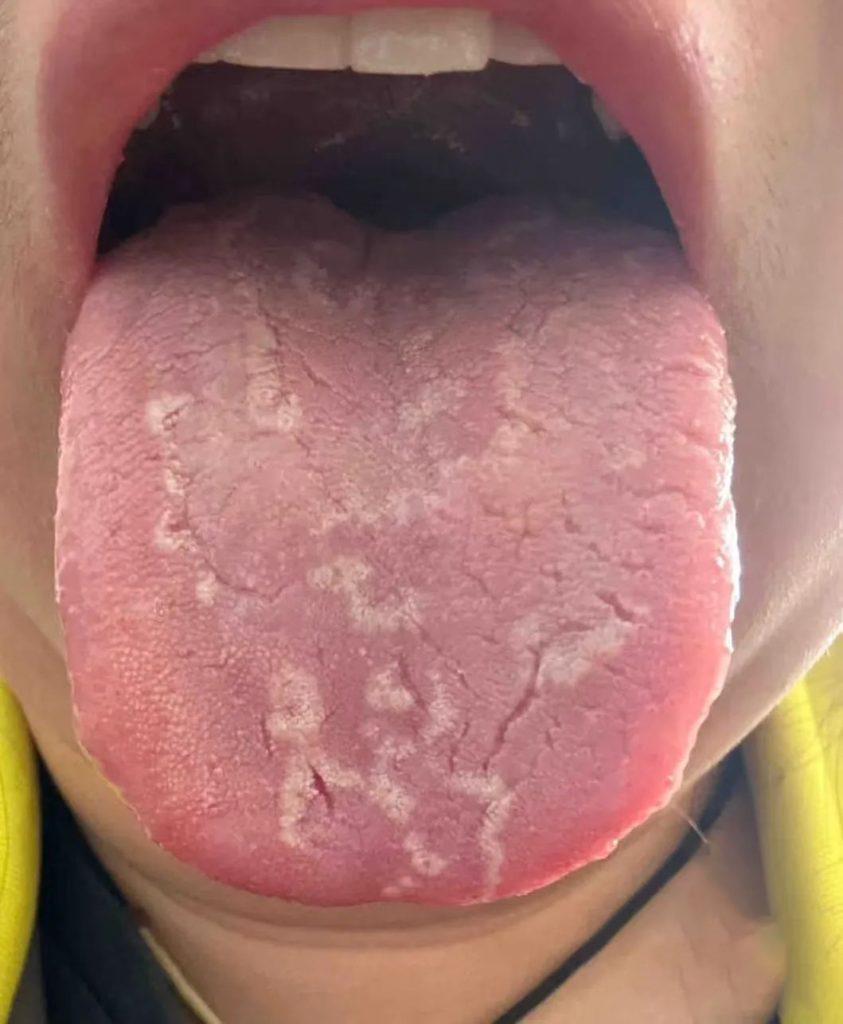
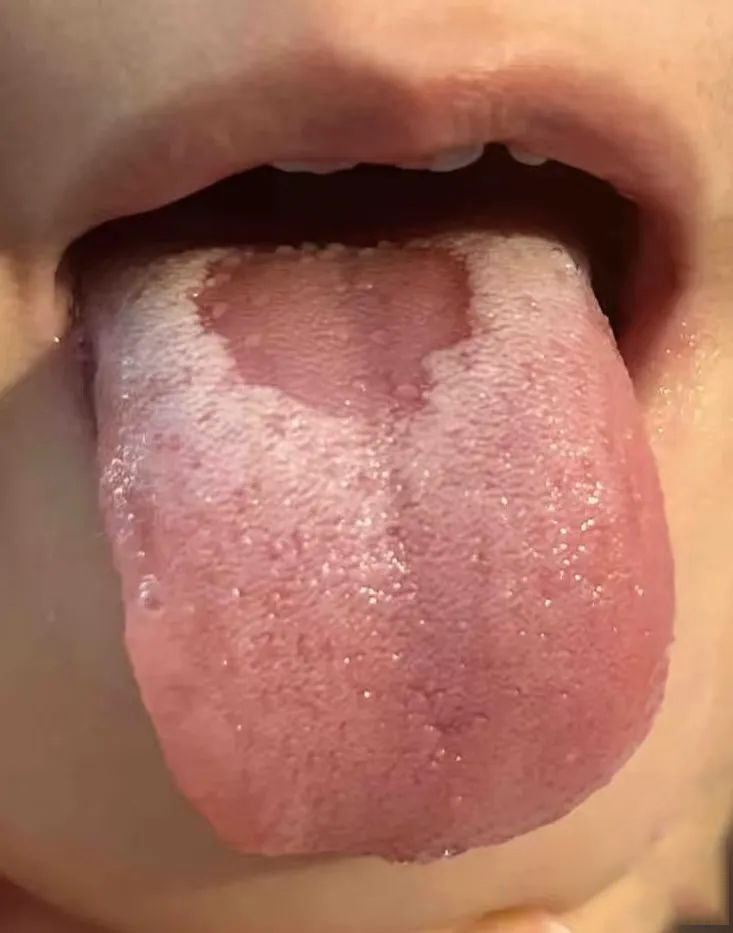

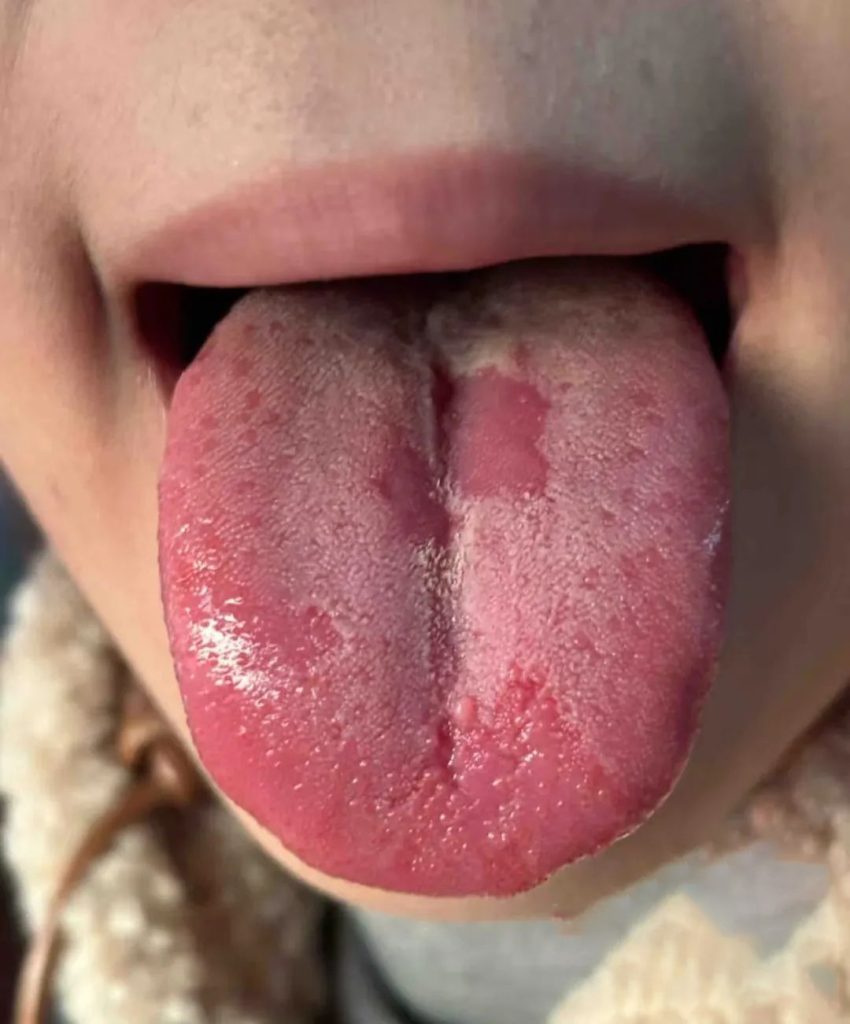




2. 用药逻辑
| 舌象特征 | 核心病机 | 推荐方剂 |
|---|---|---|
| 前剥苔伴齿痕 | 脾虚气陷 | 补中益气汤+生麦芽15g |
| 根剥苔苔白腻 | 肾阳虚水湿不化 | 真武汤+砂仁6g |
| 花剥苔舌质暗 | 肝郁血瘀 | 逍遥散+桃仁红花煎 |
| 镜面舌伴裂纹 | 气阴两虚 | 生脉散+石斛15g |
3. 生苔丹组方精要
- 核心配伍:
炒山药(补脾阴) + 生麦芽(升肝气) → 健脾升清,破郁生苔
这两味药,一个是健脾胃,补气阴,解决源头问题。一个是生麦芽它本身具有升发之性,舒达肝气,助肝木升发,也助脾升清。剥苔病机郁结阴亏,脾不升清,它都包含在里面。 - 歌诀记忆法:
“剥苔舌,三升调,山药麦芽共逍遥;
郁结散,阴液生,舌面生苔如春苗。”
三、现代人常见误区与破解之道
课本中僵化固定的东西,不能完全适用于临床。就像《哪吒2之魔童脑海》里面的一句话:“给我破!”要不断去格解掉固化的东西。
这个时代变了,是属于我们青年中医新生代的时代,我们要有自信,对中医的那份热爱会源源不断的给我们一往无前的力量,让我们在这个时代闪闪发光。
最后一句话:传承医道,每个热爱中医的人都有责任,不求发扬,只求传承精髓。
路漫漫其修远兮,吾将上下而求索。
1. 三大致命误区
- 误区1:见剥苔即用滋阴药
- 正解:舌淡嫩剥苔→脾阳不足,需理中汤+砂仁
- 误区2:舌红剥苔=阴虚火旺
- 正解:舌红少苔伴畏寒→上热下寒,需交泰丸+肉桂
- 误区3:剥苔=胃阴损伤
- 正解:剥苔伴腹胀→脾虚气滞,需香砂六君子汤
2. 调理周期规划
- 破郁期(1-2周):逍遥散打底,加郁金、香附疏肝
- 生苔期(3-4周):参苓白术散+生麦芽,健脾升清
- 固本期(5-6周):龟鹿二仙胶固本,佐少量桂枝通阳
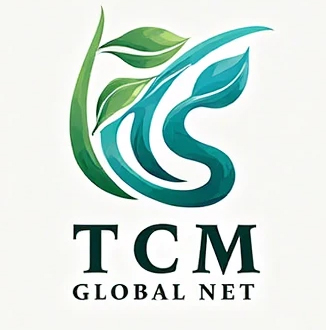

发表回复